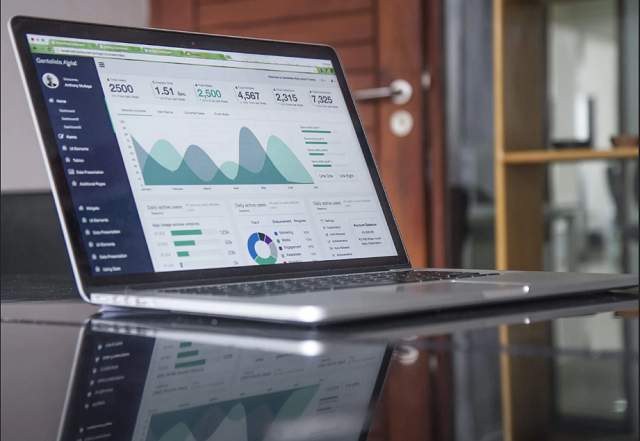When you are in your 20s and 30s retirement seems well, more years ahead than you can think. However, the earlier you start with your pension contributions the more scope for long-term appreciation. In turn, you could leave yourself with a fairly large pension fund on retirement. We will now take a look at five pension tips for millennials which will help you remain focused, flexible and in control of your finances.
Table of Contents
1. Identify Your Short, Medium And Long-Term Goals
Many people decide to travel in their early years, settle down in midlife and enjoy their retirement after they finish work. In theory this is a great life plan but ultimately things will change, you may have other goals and you might even settle down first, travel and then enjoy retirement. There is no set format but it is very important to identify your short, medium and long-term goals (even if they do change at some point).
Budgeting
There must always be a work life balance as you work to live, not live to work. Your budgeting will probably change in the short, medium and long-term as your career progresses and your mind starts to turn to retirement. There is nothing wrong in starting your pension fund with relatively low contributions in the early days. Don’t forget, if you start contributing to your pension fund aged 25 then you could have anything up to 70 years of capital appreciation on your early contributions.
Career
While it will depend upon the type of career you are pursuing, we would all expect to increase our salaries and overall wealth in the medium to long term. Some companies may offer an enhanced pension scheme for their employees that may well be worth considering. If not, there are many Canadian personal pension schemes offering flexibility and long-term growth. You will find that many larger companies will offer enhanced pension benefits to their employees to attract (and retain) the best in the industry.
Property Investment
The ultimate goal for many people is to meet somebody, live together, perhaps start a family and then look to the future. Property investment has historically been a relatively lucrative area of the market and one which often lies comfortably with long term plans and pension contributions. They are both deemed as long-term investments and both will come in very useful as a means of providing finance upon retirement.
Live life, find a balance but ultimately don’t forget the earlier you start a pension scheme the greater the potential for longer term capital appreciation.
2. Setup Savings/Investment Plan
It would be as foolish to put all your funds into a savings account as it would in an investment plan, there needs to be a balance. It is inevitable at some point in time you will need “emergency funds” so it may be sensible to consider a long-term investment/pension plan alongside a liquid savings account. When looking at pension/savings plans there are many things to consider such as:-

Management Charges
Management charges on pension funds will eat away at your capital in the longer term. It is therefore important to find a balance between long-term capital appreciation and low cost pension schemes. This is where new automated investment platforms are proving to be extremely popular, offering you your very own robo advisor.
Using in depth questionnaires these automated investment platforms will gather information about your finances, background and plans for the future. They will then create a personalised investment portfolio which fits your profile and aims. Rather than investing in dozens and dozens of shares they will simply use a set of predetermined exchange traded funds (EFTs). Each of these EFTs offers you access to a particular index which could track anything from commodities to the S&P 500, bonds to technology shares and more. As much of the work is automated you’ll find that management fees are towards the lower end of the industry scale.
Risk Profile
The modern day automated investment platform will take account of your risk profile – remember this can be changed at any time. The traditional mix of investments tends to be more capital appreciation in the early days, with varying degrees of risk, then switching to income classes as you approach retirement, to offer a degree of security. Even a relatively “high risk/high return” pension scheme would not be comparable to what many day traders would see as “high risk”. They are literary worlds apart.
Savings Accounts
There are numerous savings accounts which will offer enhanced interest the longer notice you need to give. It is worthwhile mixing and matching the notice periods available on your savings accounts to find a balance between interest rates and access. You could use your savings funds to go towards a property, that dream holiday or even just an emergency/rainy day fund to cover unexpected bills. You will only realise how important that emergency fund is when you need it.
3. Consider Debt Repayment/Pension Contributions
Many millennials make the mistake of looking at debt repayment and pension contributions in isolation. In fact, they are connected, very connected. How?
If we assume that the average annual return on the Canadian stock market is around 5%, on a long-term basis, that gives us a starting point. A 5% return on your pension fund, together with various tax incentives, could prove extremely beneficial in the longer term. However, this does not look as rosy if you are paying 15% interest on credit card debt. There is a 10% difference on the theoretical return because the more credit card debt that you pay off, the lower your interest charges.

Many people will seek to find a balance between the two, pension scheme contributions and high interest debt repayments. In the early days the balance may be tipped towards debt repayment contributions with relatively small, although regular, contributions to your pension scheme. The repayment of high interest debt will reduce your interest charges and over time the balance may shift towards pension fund contributions.
In many ways this offers you the best of both those, long-term capital appreciation on your pension investments while chipping away at your high interest debts. It is sensible to take financial advice before pursuing such a strategy as everything is relative and should be considered as part of the overall picture.
4. Keep Up-To-Date With Pension/Investment News
Tax issues, life expectancy, investment returns and retirement ages are susceptible to change in the short, medium and long-term. It is therefore vital that you keep yourself abreast of pension/investment news and ensure that you are making full use of any available tax incentives. But where do you start, what should you save each month, and what kind of returns can you expect?
An online retirement calculator is often worth its weight in gold, offering you the ability to mix-and-match certain variables. For example, add a target retirement date, expected annual expenditure in retirement and monthly contributions to your pension fund. The online retirement calculator will show you the theoretical increase in your pension fund and how this will impact your expenditure in retirement. Many people fail to realise that starting with relatively small contributions to your pension scheme in your 20s and 30s can have a huge impact on the size of your long-term pension fund.
It can be difficult to know how much to put aside each month for your pension scheme. Some people like to work on a percentage of their monthly salary. Whether this is 10%, 15%, 20% or any other figure, it needs to be one that you can maintain and even consider increasing in the longer term. Obviously we can only work on theoretical values based upon historic performance but they will give you an idea of how the system works.
5. Annual Reviews
Insurance policies, pension funds, savings plans, investments and monthly expenditure are all issues that you should review on an annual basis. Many people tend to look at each of these elements in isolation when in reality they are all part of your financial jigsaw. Locking your funds into a pension scheme with no savings for an emergency may be foolish. Investing in illiquid assets or increasing your monthly expenditure beyond that which you can afford can’t last forever. So, you need to look at each of these items as part of the bigger picture and make adjustments where required.

You will probably need the services of a financial adviser who will be able to look at your financial landscape and suggest potential changes to various elements. As we touched on above, something as simple as an increase in your pension fund contributions can have a huge impact in the longer term. Alternatively, chipping away at high interest debt can often create a better “return” when compared to average investment capital appreciation.
Summary
When you are in your 20s and 30s the idea of retirement is probably just the tiniest of dots on your long-term horizon. It can be challenging to find a balance between living in your early years and a degree of security in your latter years. The earlier you start contributing to a pension scheme the more years of potential capital appreciation. For example, starting contributions to your pension fund in your 40s may still see your funds invested for 30, 40 or even 50 years. However, if you start investing in your 20s, your funds will be invested for potentially 50, 60 or even 70 years.
It is sensible to look at your investments/finances on a regular basis. This allows you to review where you are, changes in your life and any adjustments in your long-term goals. While it is important to remain focused on your long-term plans it is important to be flexible as and when required. There is a lot to think of, but as the various pieces of your financial jigsaw come together they can create a beautiful picture.



